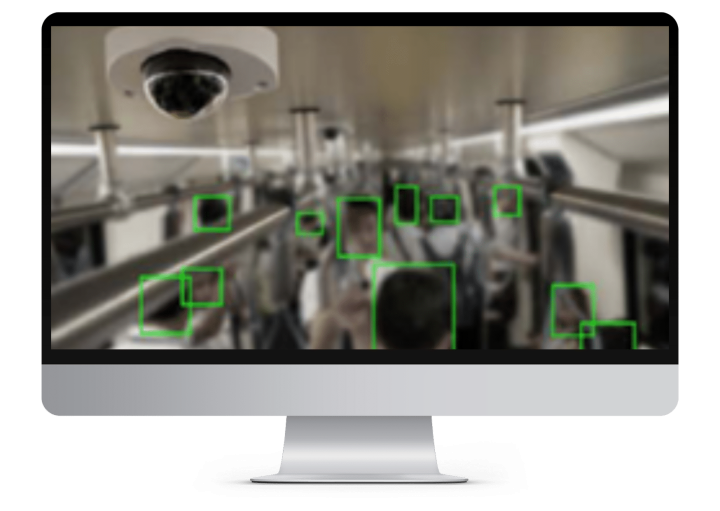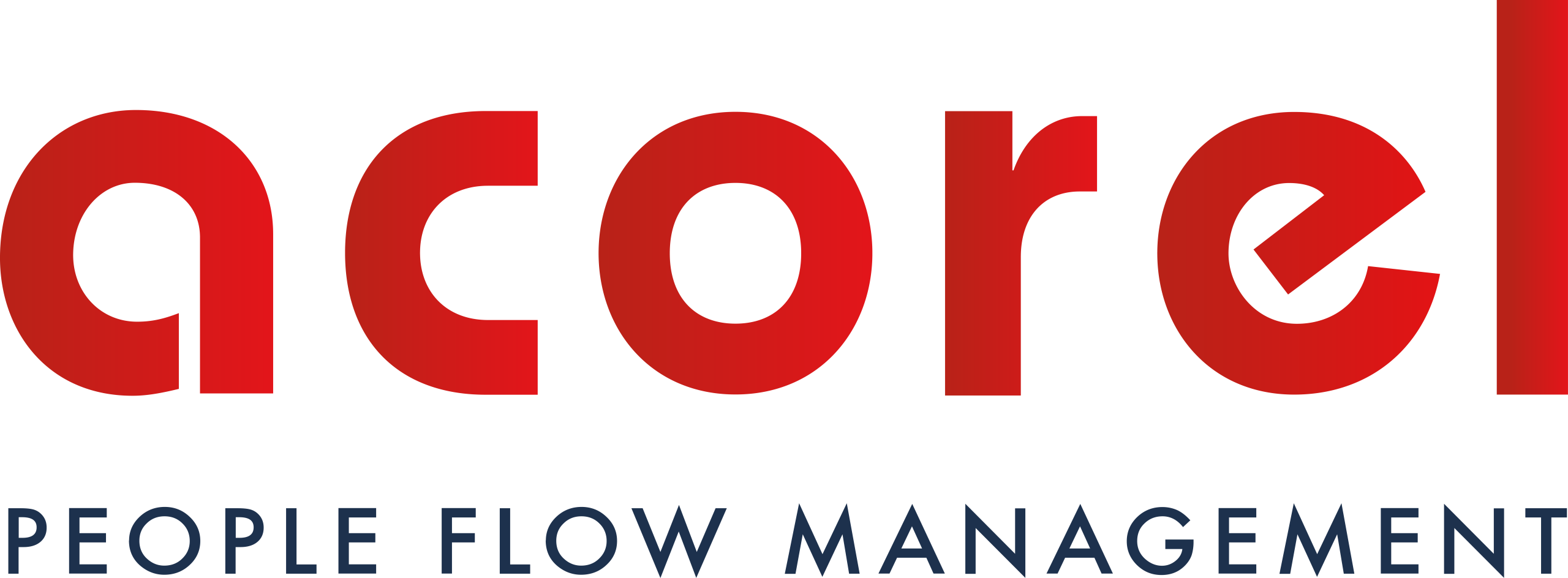Computer vision offers simplicity at its best. A single unit, existing cameras, and just like that, vehicles gain the ability to enumerate passengers in real time. This is the promise of Acorel’s computer vision solution: transforming existing infrastructure into intelligent systems without additional cost or complexity.
Designed for transport networks of all sizes, this embedded technology enables real-time occupancy measurement in buses, trams, and metros without altering the existing setup. It’s easy to deploy, GDPR compliant, and tailored to real-world conditions, making it a practical solution to the challenges of passenger flow management and service optimisation.
Computer vision: on-board technology driving operational performance
A flexible, quick-to-deploy, cost–effective solution
Unlike traditional technologies installed at doors such as infrared sensors, floor mats, or 2D/3D counters, computer vision requires no added hardware at every entry point. Instead, it leverages the cameras already installed on board, originally for security purposes.
Moreover, a single smart unit is all it takes to activate this embedded computer vision technology, transforming existing cameras into sensors capable of performing real-time passenger enumeration. This technology can be installed at access points to carry out the enumeration of entries and exits, but it can also be positioned inside the vehicle. In that case, it enables accurate real-time assessment of occupancy levels and a reliable estimation of vehicle load. Based on computer vision, this approach delivers essential data for managing passenger flows. It represents a different method, yet one that is equally effective.
This lightweight architecture allows for rapid deployment with no need to withdraw vehicles from service or invest in heavy infrastructure, making it an ideal choice for small to mid-sized networks seeking to modernise without high costs or disruptive works.

How Acorel’s computer vision solution works
Computer vision relies on intelligent cameras and image analysis algorithms capable of identifying individuals regardless of lighting or environment. Acorel’s solution uses the existing CCTV cameras already on board, paired with a dedicated embedded processing unit.
Each equipped vehicle includes a processing box directly linked to its cameras. This embedded system analyses passenger flow in real time, eliminating the need for new sensors or complex infrastructure. All data is processed locally, with no need for constant internet connectivity. Once the vehicle returns to the depot or a designated access point, the data is synchronised automatically, ensuring seamless operation.

Proven reliability, even in crowded conditions
Even in high-density scenarios with passengers carrying children, large luggage, or moving chaotically computer vision maintains a high level of reliability
Its full potential is unlocked when installed inside the vehicle, offering a comprehensive view of the onboard space. Indeed, placed on board, it provides an overall view of the interior space, enabling the occupancy rate to be continuously assessed and the actual vehicle load to be accurately estimated while limiting the risk of cumulative errors. The system delivers robust, stable data essential for daily operational decisions, especially when passenger flow is unpredictable or uneven.
Real-time passenger flow optimisation with computer vision
With computer vision, transport operators can:
- Monitor occupancy levels in real time (as a percentage),
- Anticipate peak times and adjust service frequency,
- Prevent overcrowding and enhance onboard safety,
- Improve flow on platforms and in stations,
- Generate accurate reports for mobility authorities.
Based on embedded vision technology, data is processed directly on board. Once connected at a depot or terminus, the system sends the data to Vision Mobility, Acorel’s central supervision platform. This interface ensures secure, centralised management of network-wide data.
Looking to better anticipate passenger peaks and optimise platform flow? Our experts are ready to help you deploy a computer vision solution tailored to your operational needs. Get in touch today.
GDPR compliance
At Acorel, data privacy is paramount. Our computer vision solution was designed from the ground up to meet strict General Data Protection Regulation (GDPR) requirements.
The built-in safeguards include:
- No personally identifiable images are recorded,
- No facial recognition or individual identification,
- All data is anonymised, non-traceable, and encrypted,
- Image processing is done locally on board, with no continuous connection or video stream transmission.
This ensures operators gain valuable insights for network management without ever compromising passenger privacy.
A practical response to today’s mobility challenges
In summary, computer vision offers a pragmatic answer to the challenges faced by urban transport managers. It streamlines service monitoring, delivers actionable data at lower costs, and ensures full regulatory compliance.
Acorel brings this technology to public transport with recognised expertise, proven solutions, and tailored support every step of the way.
